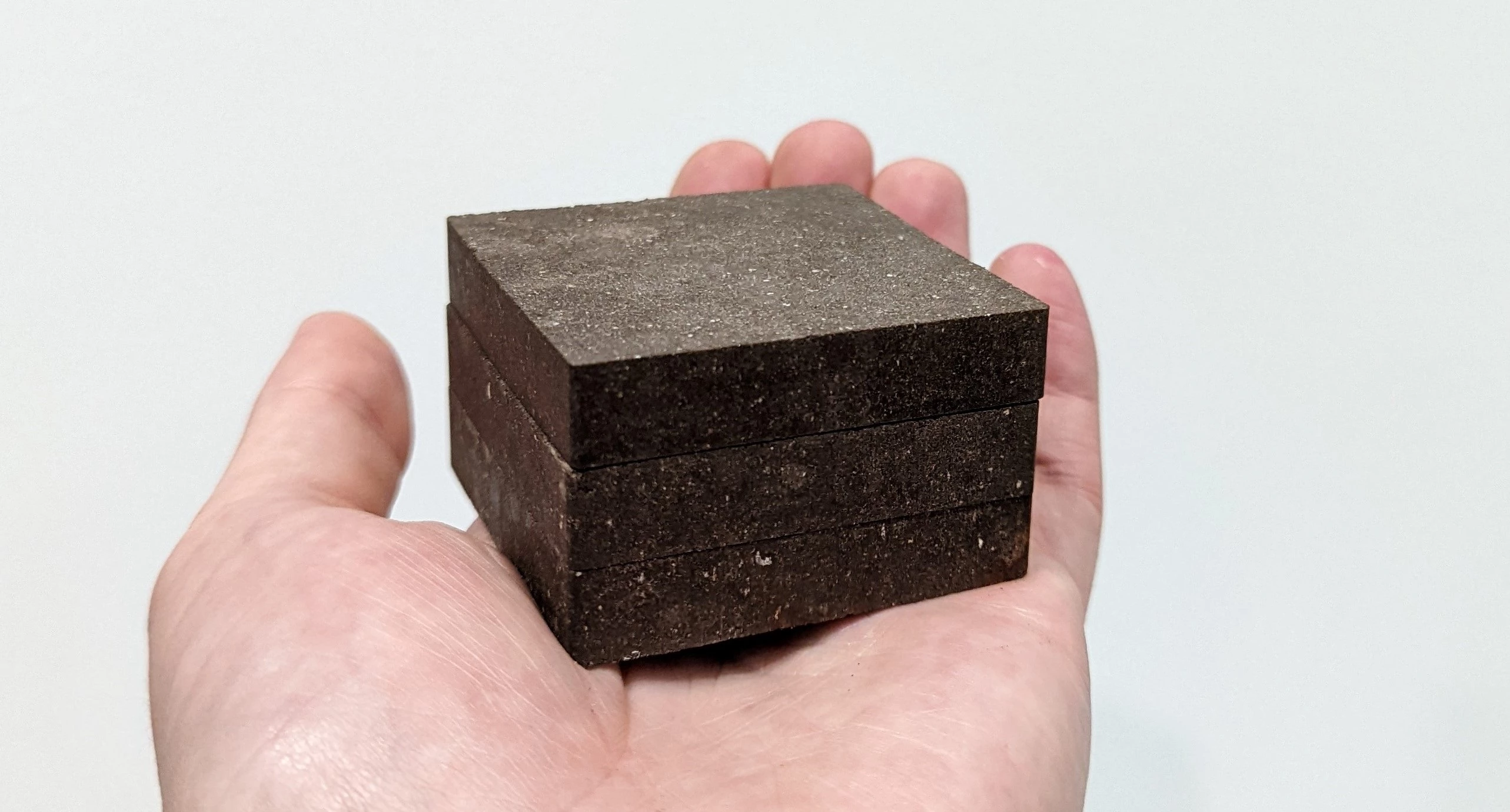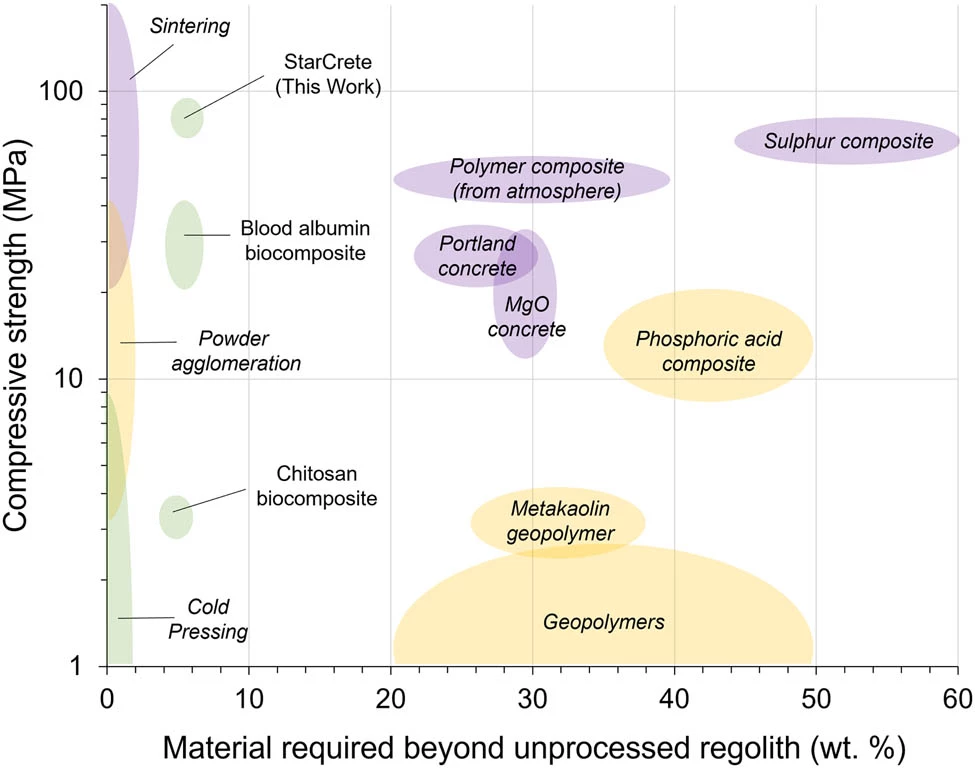There’s a different kind of space race under way, one that has engineers trying to crack the code on the best way to build on other celestial bodies. Concepts to build on the Moon have included using lunar dust and materials that could generate electricity, while for Mars scientists have explored no-bake bricks and 3D-printed ones using planetary minerals.
Now, from the team that earlier developed AstroCrete, fashioned out of blood, urine and Martian dirt, comes the slightly more palatable StarCrete, made from extraterrestrial dust, potato starch and a dash of salt. And the team says it’s strong enough that it could feasibly build houses on the planet.
When tested, StarCrete had a compressive strength of 72 Megapascals (MPa), more than twice the toughness of ordinary concrete (32 MPa). When made from moon dust, StarCrete hit more than 91 MPa. The team’s previous AstroCrete was around 40 MPa but had the downside of requiring an ongoing source of blood to produce the building materials.
“Since we will be producing starch as food for astronauts, it made sense to look at that as a binding agent rather than human blood,” said Aled Roberts, lead researcher on this project. “Also, current building technologies still need many years of development and require considerable energy and additional heavy processing equipment which all adds cost and complexity to a mission. StarCrete doesn't need any of this and so it simplifies the mission and makes it cheaper and more feasible.
“And anyway, astronauts probably don't want to be living in houses made from scabs and urine,” he added.
One of the many challenges of building in space is that it will require cost-effective building materials generated on site; it would be prohibitively expensive to be carting traditional bricks and mortar off this planet.
The researchers found that a sack (55 lb/25 kg) of dehydrated potatoes (chips) contained enough starch to produce nearly half a ton of StarCrete, or 213 bricks. For reference, a three-bedroom house has around 7,500 bricks.

The team used simulated Martian soil mixed with the starch, and found that adding a common salt, magnesium chloride, greatly improved the strength of their bricks. This could be sourced from the surface of Mars – or even from the tears of astronauts.
The researchers, who have recently launched the sustainable building materials tech company DeakinBio, now hope to get their biocomposite building blocks out of the lab and find a robust solution to the moisture-sensitive starch binder to also make StarCrete Earth-friendly.
With around 8% of global CO2 emissions stemming from the production of cement and concrete, a strong, green alternative might be a welcome addition to this planet, too.
The study was published in the journal Open Engineering.
Source: The University of Manchester








